As interest in American-harvested seafood grows -- evidenced by the growth in the number of companies like ours as well as the popularity of more urban fishmonger type storefronts -- consumer comfort with the product is following swiftly behind. Americans are more interested in sustainability, whole foods, and the relationships those beliefs can bring than they’ve been in a long time. And thanks to educational efforts by seafood enthusiasts across the country, more and more folks are embracing, yet again, ocean-dwelling creatures as a valuable protein source. We're grateful, but we're also here to do our part. We want to help make seafood the norm for you and your family. Once you’ve put some of these best practices to use, we’re sure it’ll be second nature to eat from the sea like we do all year long.
This week's blog is here to help our customers in achieving the best seafood experience. We do not ship our seafood frozen just out of convenience, but because freezing fish within hours of it being caught maintains the freshness that we get to enjoy right out of the net. A "fresh" fillet in grocery store display case is often not indeed "fresh" but instead thawed and left to sit in the case. Although these thawed fillets are left at a temperature safe for consumption, the space of time between thawed and cooked is long enough to start to deteriorate the quality of the fish. Local customers will notice that in our Bloomsburg storefront, we keep just about everything frozen, so as to maintain this quality. We freeze our fish once, hours after it’s pulled from our nets and delivered to our processing dock. We keep it frozen in our big freezers and with dry ice until it ends up on your doorstep and you’re ready to eat it.
Buying directly from us ensures this process. Did you know some other seafood sellers and processors ship their fish frozen to China, where it’s thawed, processed into portions or burgers or what-have-you, then refrozen before it’s shipped back to the USA -- not only adding a zillion food miles, but also slowly but significantly deteriorating the quality of the fish?
So, what is the best thing to do when you order from our online store and receive frozen, vacuum-packed fillets or steaks? There is indeed a best way to do it; it’s not necessarily a "right" way, but proper thawing and storing techniques will guarantee the quality of our product.
If you'd like to enjoy our products within hours, for that evening’s dinner, you can put the it, still in its vac-pac, in a shallow dish and submerge it in cold tap-water. If you’re in a big hurry and not worried about your water bill, you can run the water continuously to speed up the process.
If you have more time, like overnight, the best way to thaw is to place the product in a shallow dish in your refrigerator with the vac-pac cut open. This will allow it to thaw more evenly throughout, rather than have the thinner parts of the meat drop all the way to room temperature while the middle is still rock hard.
Cooking the fish frozen directly is an option, though rarely recommended; it often results in a chewy texture, but here are a few select recipes, provided by the Alaska Seafood Marketing Institute, that understand best how fast life moves sometimes, and how fast we need to get food on the table.

Individual sockeye steaks ready for shipping
Thawed fish should be enjoyed within the day. Frozen fish will last about nine months in your freezer; if you have an in-refrigerator freezer, plan to use eat that up within the month. When your delivery first arrives, it is a good idea to survey the product. Vacuum-packs are definitely the best option, but it can start to peel away and gape from the frozen fillets. Use these ones first! And to prevent this from happening with the rest of your product, handle the vac-pacs gently. As little handling and bumping of the fillets with other things in your freezer will help maintain the tight seal which best preserves the fish.
Please reach out with any handling practices questions you might have! Our mission is not only to get the quality product to your door but also to make sure you enjoy it. Let us know how we can help you do so.
And as an aside, as the fish-pert and west coast support to WFS, I collaborate with the fantastic WFS staff mainly over email. However, this past week I was able to swing through, albeit briefly, and meet the team in person towards the end of a trip back east. In one short hour, I met Steve’s mom, who was hard at work labeling vac-pacs, Jenn’s dad, who was swinging through to check out the new freezer (!), and finally put together that Crissy, who has been at WFS since just about the beginning, is Steve’s cousin. So fun to check out the space and see a true family business at work!

Our shipping options

Portions on their way to the vac-pac sealer.




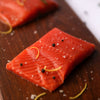 Wild Alaska Salmon
Wild Alaska Salmon Alaska Salmon Burgers
Alaska Salmon Burgers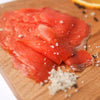 Smoked Salmon & Seafood
Smoked Salmon & Seafood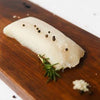 Wild Alaska Whitefish
Wild Alaska Whitefish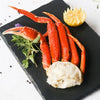 Wild Shellfish & Shrimp
Wild Shellfish & Shrimp Wild Albacore Tuna
Wild Albacore Tuna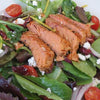 Canned Seafood
Canned Seafood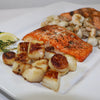 Meal Box & Samplers
Meal Box & Samplers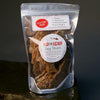 Pet Products
Pet Products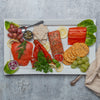 Gifts
Gifts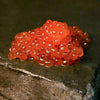 Specialty
Specialty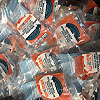 Wholesale Ordering
Wholesale Ordering